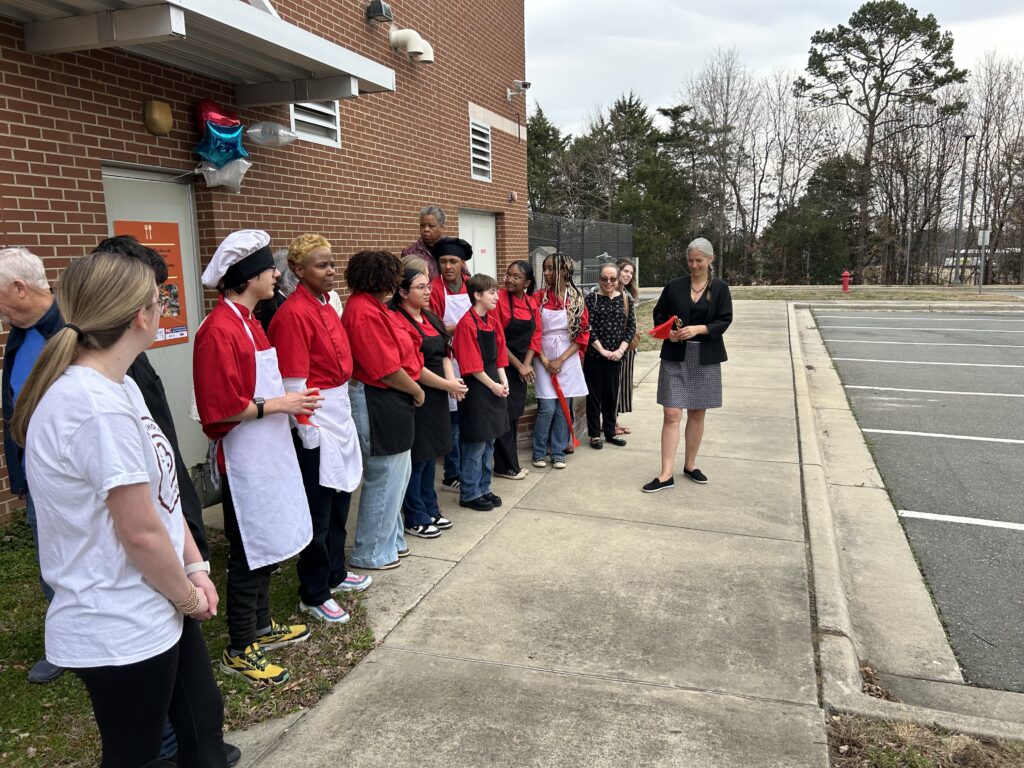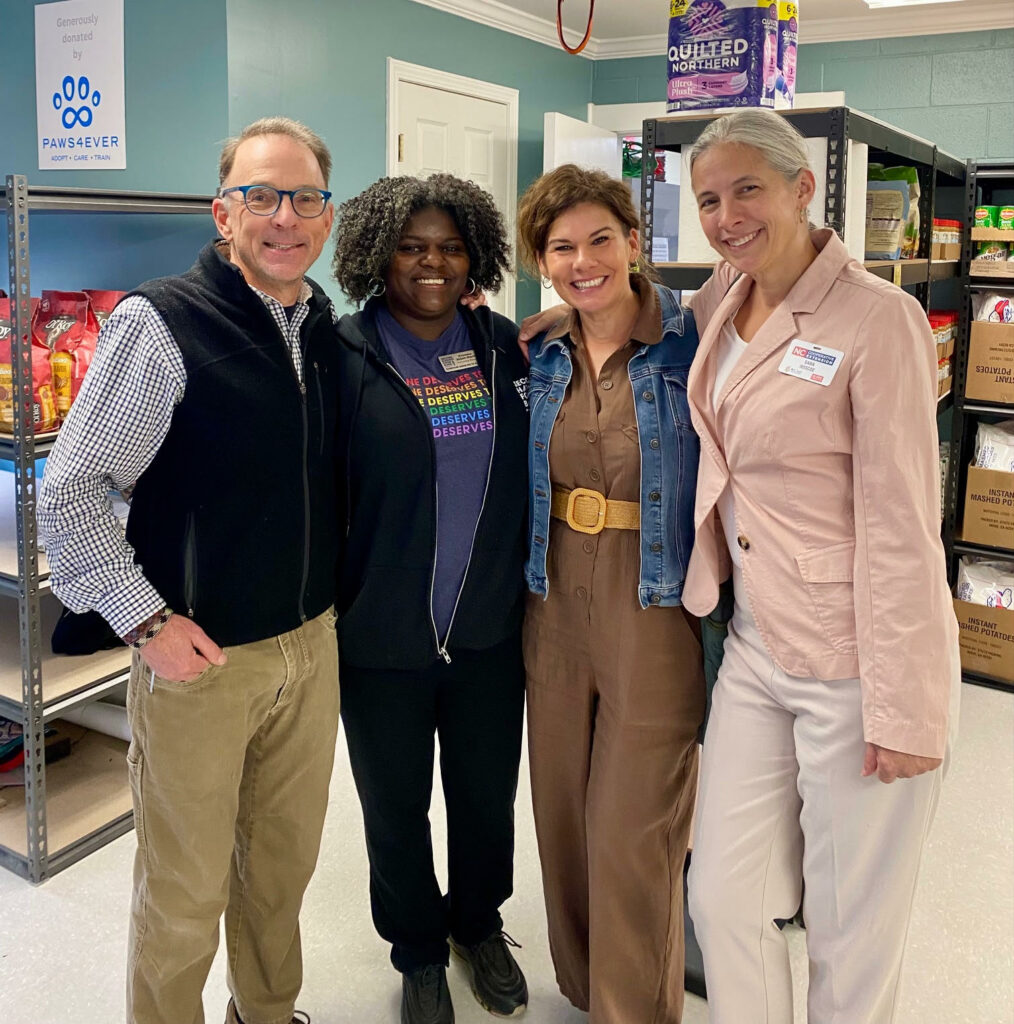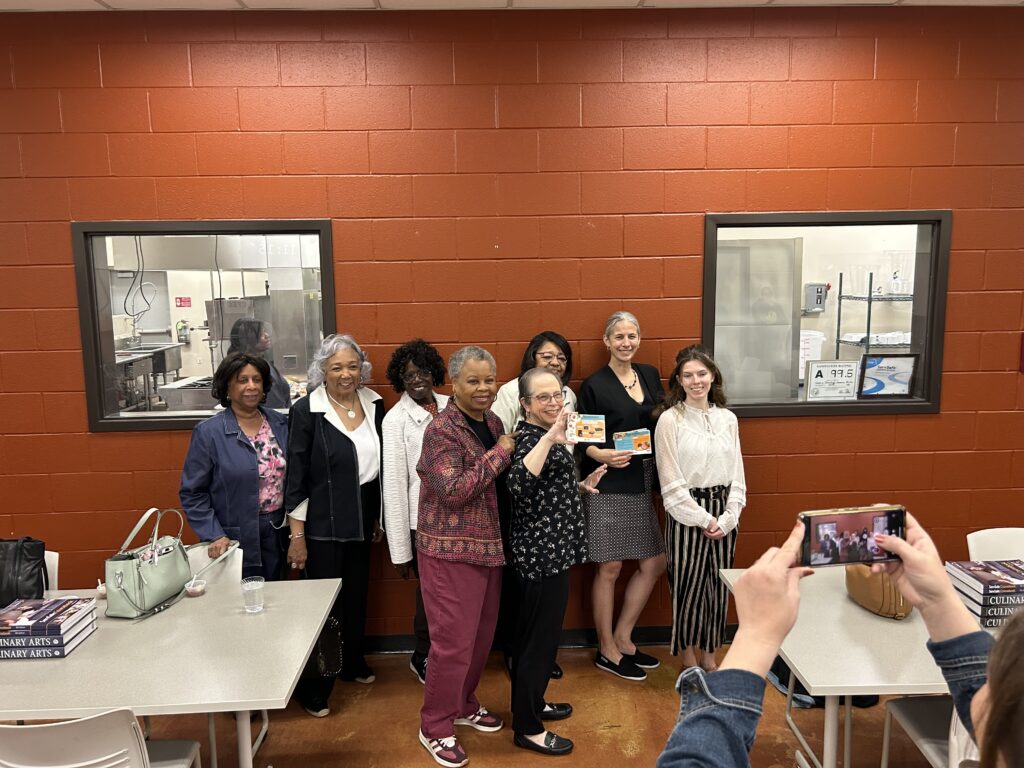Making Connections to Enhance Local Food Systems: A Conversation With Sara Roscoe
go.ncsu.edu/readext?1064788
en Español / em Português
El inglés es el idioma de control de esta página. En la medida en que haya algún conflicto entre la traducción al inglés y la traducción, el inglés prevalece.
Al hacer clic en el enlace de traducción se activa un servicio de traducción gratuito para convertir la página al español. Al igual que con cualquier traducción por Internet, la conversión no es sensible al contexto y puede que no traduzca el texto en su significado original. NC State Extension no garantiza la exactitud del texto traducido. Por favor, tenga en cuenta que algunas aplicaciones y/o servicios pueden no funcionar como se espera cuando se traducen.
Português
Inglês é o idioma de controle desta página. Na medida que haja algum conflito entre o texto original em Inglês e a tradução, o Inglês prevalece.
Ao clicar no link de tradução, um serviço gratuito de tradução será ativado para converter a página para o Português. Como em qualquer tradução pela internet, a conversão não é sensivel ao contexto e pode não ocorrer a tradução para o significado orginal. O serviço de Extensão da Carolina do Norte (NC State Extension) não garante a exatidão do texto traduzido. Por favor, observe que algumas funções ou serviços podem não funcionar como esperado após a tradução.
English
English is the controlling language of this page. To the extent there is any conflict between the English text and the translation, English controls.
Clicking on the translation link activates a free translation service to convert the page to Spanish. As with any Internet translation, the conversion is not context-sensitive and may not translate the text to its original meaning. NC State Extension does not guarantee the accuracy of the translated text. Please note that some applications and/or services may not function as expected when translated.
Collapse ▲Sara Roscoe serves as the Family and Consumer Sciences Agent and Local Foods Coordinator for N.C. Cooperative Extension Alamance County Center, and focuses her work on education related to food safety, nutrition, and home food preservation, while supporting local food systems through initiatives such as Farm to School, Farm to Early Childhood Education, and partnerships with local farmers and food pantries. Sara is a member of multiple workgroups within the Local Food Program Team and we are excited to continue working alongside her as she does great work in Alamance County. One of the most rewarding parts of Sara’s role includes facilitating connections between community members and the various food-related resources within the county and region. Alamance County boasts a unique blend of rich agricultural heritage and innovative urban development which creates vast opportunities and Sara’s passion lies in fostering collaboration among the resources to amplify their collective impact.
One of the most rewarding parts of Sara’s role includes facilitating connections between community members and the various food-related resources within the county and region. Alamance County boasts a unique blend of rich agricultural heritage and innovative urban development which creates vast opportunities and Sara’s passion lies in fostering collaboration among the resources to amplify their collective impact.
Alamance County is poised to serve as a vital link between agricultural and urban resources across the region as it is uniquely positioned within North Carolina’s expanding urban corridor, situated between the Triangle and the Triad. This combination of rural history alongside the rapidly evolving urban landscape fosters an exceptional local foods environment that encompasses thriving farms, vibrant farmers market, distinguishable manufacturers and a wide array of restaurants and vendors. As a growing county of over 180,000 residents, Sara’s goal is to help mobilize the variety of resources and support organizations and businesses in the county who are identifying emerging needs and impacting a large number of community members. A great example of Sara’s efforts working to coordinate these resources is through Alamance Burlington School System’s (ABSS) Career and Technical Education Center’s (CTEC) Food Security Community Service Project. This program connects students in the CTEC Culinary Arts Training and Teacher Cadet programs with food from the Second Harvest Food Bank, delivered by Southern Alamance Family Empowerment (SAFE). Students use the food to prepare crockpot meals which are then distributed by the AMOS of Alamance Food Pantry to food insecure families each week. The students also distribute “backpack meals” to other students in the community who need additional food. Sara had the opportunity to share more about the program through a local news spotlight which also showcased how creating a healthy food system takes all members of the community working together.
A great example of Sara’s efforts working to coordinate these resources is through Alamance Burlington School System’s (ABSS) Career and Technical Education Center’s (CTEC) Food Security Community Service Project. This program connects students in the CTEC Culinary Arts Training and Teacher Cadet programs with food from the Second Harvest Food Bank, delivered by Southern Alamance Family Empowerment (SAFE). Students use the food to prepare crockpot meals which are then distributed by the AMOS of Alamance Food Pantry to food insecure families each week. The students also distribute “backpack meals” to other students in the community who need additional food. Sara had the opportunity to share more about the program through a local news spotlight which also showcased how creating a healthy food system takes all members of the community working together. Facilitating the partnership with the ABSS School Nutrition Department was a significant achievement for Sara. This collaboration resulted in knife skills training for 46 ABSS School Nutrition Managers and Supervisors as well as including Farmer Foodshare Food Hub as a vendor which allowed the procurement of over $6,000 worth of locally grown apples and strawberries for the local schools. In addition, Sara has supported the ABSS with two grant submissions for reimagining school lunch procurement and menus, provided assistance to school-run food pantries serving their communities, and developed educational classroom activities for the Local Food Snacks program. With both organizations sharing a common goal of healthy food access, food-based education, local and regional food system support, and assisting school communities in helping families achieve food security, this partnership felt like a natural fit. Sara shared that while the needs of school systems vary by county, collaborations with county Extension offices are extremely replicable.
Facilitating the partnership with the ABSS School Nutrition Department was a significant achievement for Sara. This collaboration resulted in knife skills training for 46 ABSS School Nutrition Managers and Supervisors as well as including Farmer Foodshare Food Hub as a vendor which allowed the procurement of over $6,000 worth of locally grown apples and strawberries for the local schools. In addition, Sara has supported the ABSS with two grant submissions for reimagining school lunch procurement and menus, provided assistance to school-run food pantries serving their communities, and developed educational classroom activities for the Local Food Snacks program. With both organizations sharing a common goal of healthy food access, food-based education, local and regional food system support, and assisting school communities in helping families achieve food security, this partnership felt like a natural fit. Sara shared that while the needs of school systems vary by county, collaborations with county Extension offices are extremely replicable.
Other projects that Sara has been involved with include supporting local food pantries through the Steps to Health Healthy Food Pantry Access Training Program, supporting local farmers markets to accept SNAP, and coordinating the re-launch of the Donation Station program this market season.
Sara anticipates the growth and development of local and regional food systems becoming increasingly critical for both economic prosperity and community well-being in North Carolina. “We’re seeing a combination of factors fueling this trend: a surge in consumer demand for locally sourced products, a renewed emphasis on resilient and sustainable agricultural practices, a strong desire for more robust local and regional supply chain options, and a heightened focus on food security in response to population growth and shifting demographics.” From her perspective, things like local food, farmers markets, direct-to-consumer farm sales, and agritourism will play fundamental roles in cultivating a vibrant and thriving local food landscape across the state.


